#vr hmd
Text
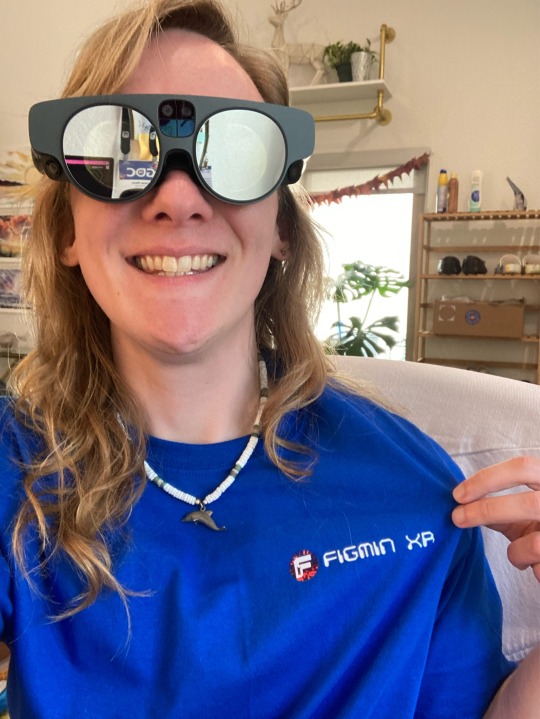
no stream tonight because I need some more time to set up the new hardware, but I GOT IT WORKING. (also: new company shirt hehe)
#incessant meowing#me#gpoy#there is no hmd that looks cool yet#but i love the mad scientist vibes the magic leap has lmao#i wonder what people will think about me when i’m using this out on nature trails and stuff hsgshsj#ps: hmd means ‘head mounted device’#it’s an umbrella term for all ar/vr headsets#there are some ar glasses out there that actually look quite fashionable#but they have the computing power of a potato and can’t really do anything#we are still very much in the bulky era of this new technology
12 notes
·
View notes
Photo

Bit of old school VR action coming up! #retrogamer #retrogaming #oldschool #vr #hmd #tbt #throwback #ausretrogamer #geek #gamer https://www.instagram.com/p/Cng2INrh3VL/?igshid=NGJjMDIxMWI=
5 notes
·
View notes
Text
夏普將�� 2024 年夏季推出 HMD——該公司歷史上首個夏普技術日將展示大量 AR VR 技術
夏普,這個家喻戶曉的品牌即將在2024年夏季推出其首款頭戴式顯示器(HMD),標誌著其深入擴增實境(AR)和虛擬實境(VR)領域的堅定一步。在即將到來的夏普技術日,我們將預見大量AR與VR技術的集中展示,其中XR技術的結合將開創全新的互動方式,為用戶帶來前所未有的便捷。
夏普的HMD產品充分展示了XR技術如何在真實空間中顯示信息,並在工作與生活中發揮計算支持的作用。這些眼鏡提供的服務範圍從未來城市漫遊到擴展辦公空間,再到日常生活中的視覺與聽覺支持,每一個細節都彰顯了夏普對於創新的追求。
HMD的細節令人印象深刻:搭載Sony的IMX258影像感應器,這款1/3.06英寸的1300萬像素自動對焦傳感器,不僅解析度達到4208 x 3120,還能在極小的模組尺寸中實現(8.5 x 8.5mm,高度不超過5mm),這樣的設計使得HMD的攜帶與佩戴變得更加方便。結合KANTATSU 5P +…
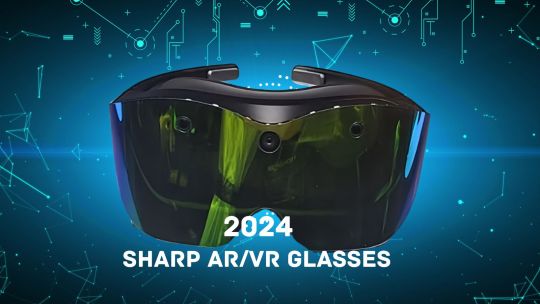
View On WordPress
#2024年科技產品#AR/VR Headsets#AR/VR頭戴裝置#Augmented Reality#科技趨勢#科技創新#虛擬現實#虛擬實境#虛擬實境遊戲#虛擬實境資訊#虛擬實境新聞#Sharp HMD#Tech Products 2024#Tech Trends#Technology Innovation#virtual reality#vr#vr news#vr news today#Wearable Tech#XR Technology#XR技術#擴增現實#智能穿戴設備
0 notes
Text
#vrchat#apple arcade#books#article#medium#ulysses#writing#day#diary#journal#lgbtqia+#pictures#screenshot#game#apple tv#affinity photo#sleep#vr#vr headset#hmd#Avali#Avalis#furry#furries#snuggle#boyfriend#vr boyfriend#virtual boyfriend#oculus#oculus quest
0 notes
Link
Virtual Reality (VR), Augmented Reality (AR), and Mixed Reality (MR) are all immersive technologies, but they differ in how they blend the virtual and real world.
0 notes
Text
youtube
#Welcome back for some weekly#VR news. Today we have a few major stories.#Meta employees believe the#Metaverse will be the companies slow death#the Pimax Portal HMD is unbelievable and the Pico 4 outperforms the#Quest 2. Plus new VR games!#Youtube
0 notes
Quote
VRが普及しない理由は「HMDを付けたくない」に行き着く気がしている.音響系のデモをやると「ヘッドホンを付けたくない」って人は結構いて,理由は「髪型が乱れるから」.HMDが同じ理由で敬遠されてもおかしくはない.
XユーザーのM. Morise (忍者系研究者)さん
12 notes
·
View notes
Note
so whats the deal with overkills the walking dead?
I'm glad you asked! (approx. 2,300 words)

So our story starts during Payday 2's first anniversary, the Fall of 2014. Players had to attain certain community goals to get new things to play with during their first annual Crimefest event, and the last two prizes were secret. They wound up being John Wick as a playable character, and the trailer for a new game Overkill was working on, based in the world of The Walking Dead comics. The premise was simple: it was set in the same part of the world as Payday 2, Washington DC, and would involve players trying to keep themselves and their camp alive during the zombie apocalypse made popular in Robert Kirkman's graphic novels and the AMC TV show. Given the fact that Payday 2 had proven to be a tremendous cultural hit around this time, getting the likes of Giancarlo Esposito and making cameos in the Wick movies at the height of their popularity, and given how at the moment it is very possible to argue that Payday 2 might have sold more copies than Super Mario Brothers 3, it would seem that OTWD was in good hands.
The problem, though, was their CEO. Bo Andersson used pressure he conjured up in Varvtre AB, a holdings company he was on the board of directors for, to become the CEO of Starbreeze when they acquired Overkill Software, the makers of Payday: The Heist and Payday 2. This also moved Bo from a role within the games industry alongside his brother to being his brother's superior and putting him in a firmly business role. This was good for Bo, because it would allow him to scrape capital from Overkill on their pursuit into superstardom to fund his own dream project: Storm.

Storm was a concept that Bo had been working on since 2008, the idea of bringing virtual reality back from being a curious novelty we played with in the 1990s into a mainstream competitive eSport. Players would wear tactical vests with computers built into them and a 5K resolution HMD that Acer would develop with the aid of Starbreeze in a massive bespoke arena, and using a combination of LIDAR scanning, realtime texture mapping, and the Valhalla game engine Starbreeze paid $8 million for, their physical arena would turn into a sci-fi deathmatch where players would cooperate to eliminate the enemy team and seek victory.
Bo Andersson was paying tens of millions of dollars to invent Laser Tag.
But how does this tie into The Walking Dead? Well, as a proof of concept, the work that Overkill had done in their in-house game engine, Diesel 2.0, would be ported into Valhalla to bring Overkill's The Walking Dead to life. Overkill's employees had long complained that Diesel could not compete visually, and even incorporating proper normal maps and bumping up the texture quality could not shake the appearance of a Source Engine or early Unreal 3 title. Despite releasing in 2013 and with the game now moving into 2016, onto the 8th generation of consoles, Payday 2 was not a looker and Overkill's The Walking Dead faced the same fate.

The problem, though, is that Bo Andersson bought the Valhalla Engine, which was being designed for VR first and foremost, much too early. The engine was literally incomplete, and the programmers had to write tools for the engine before they could write any code for the game itself. After nearly a year of work, they did bring Valhalla into a usable state, and used its VR prowess to power Payday 2's VR version. Bo also proposed a VR demo of Overkill's The Walking Dead to be hosted in Dubai, at VR Park (now titled PlayDXB), to demonstrate the game, the headset, and the VR technology to Middle Eastern investors who could free Bo from the shackles of Scandinavian game development and make him the worldwide name in VR. This delayed their actual non-VR Walking Dead game, which had serious funding from Skybound Entertainment and Robert Kirkman, past its intended 2016 street date. The game was nowhere near finished as Overkill staff were pulled back and forth to so many different projects within the studio. They received an extension to their deadline, Fall 2017, and work continued on the Valhalla Engine and the VR demo.
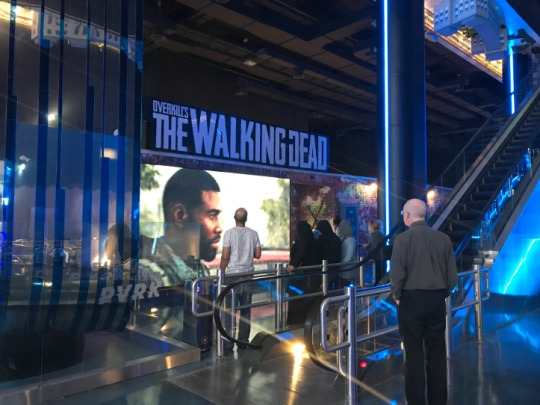
Fast forward another year. Starbreeze puts out Raid: World War II, a Diesel 2.0 title in which four players steal from the Nazis in almost exactly same manner as in Payday 2, starring John Cleese as the handler for the crew, and some trailers commissioned for their Walking Dead game using virtually zero actual in-game assets, and Skybound makes them an ultimatum: if the game is not out by November 2018, then they lose the rights to the license. They have wasted the rights holder's time and money for too long, and the project is dragging its heels with a CEO seeing it as a low priority to get their contractually-obligated co-op FPS for PCs and consoles out versus his ambitions of filling an entire space in Dubai with his name, his brand. Overkill developers, who had been clamoring for years to use an actual engine that makes sense for FPSes, finally get their wish, and Bo Andersson invests in commercial licenses for Unreal Engine 4. The problem now, though, is that the staff have a year to make the game in Unreal, with the caveat that they have zero experience in the engine. If they had made this move two years ago, they'd have the time to commit to learning the ins and outs, but they don't.
Overkill goes into crunch, with staff sleeping in the offices and working 100-hour weeks to learn Unreal and take what the documentation and tutorials offer them and implement it into their Walking Dead title, reverse-engineering the concepts they had implemented into the Diesel and Valhalla versions of the game and dropping them into Unreal. Bo Andersson, all the while, is going on vacations and not coming in on the regular, spending his time playing zombie games for inspiration and coming to the staff with his own ideas for the game based on them. Glory Kills, Special Infected, robust base maintenance mechanics and the ability to command teams of non-player survivors on missions all wound up in the game with little actual regard for how these pieces fit together. By the time that he realized he should be more actively hands-on, he only had a scant few months to spend with the staff at the final mad dash to make a playable product. The game was playable at E3, with two demo levels, and one of them playtested so poorly that the staff had to pull it from the rotation, but when Bo heard this feedback he would not tell his staff. He told them the game was testing great at E3, that people loved it.
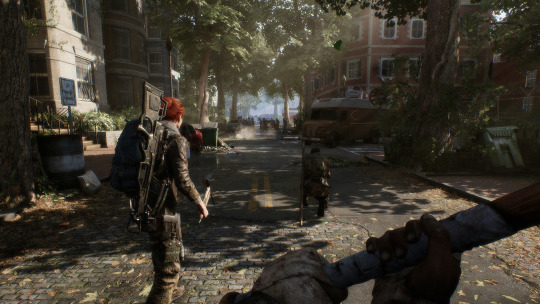
Overkill's The Walking Dead released on the 7th of November, 2018, a week after Payday 2 ended support by letting players kill fallen angels and solve a giant puzzle wheel about the in-game lore in order to turn Bain, the player's main contact, into the US President via a body-swapping artifact used by the ancient kings of Kataru, who were gifted immortality at the same time common man was gifted the knowledge of good and evil at the Garden of Eden. While the clown-themed robbery game ended on a confusing note, Overkill's The Walking Dead was getting started to a whole heap of roughness. The game's combat was frustrating, with hordes of walkers that had to be put down one clumsy charged melee swing at a time and human enemies who fired off AKMs and MP5s with reckless abandon. Their noise would draw hordes, which would need to be contended with via your own noise, as dealing with a few dozen enemies with melee combat was awkward and difficult.
Being grappled by a zombie cost a health bar and a half in a game where your starting character had on average four healthbars to their name, and the underlying gameplay, despite being completely linear missions in level and objective design, were just Payday heists at the end of the day. Hell or High Water involved you raiding a camp owned by The Family, an antagonistic gang your camp is at war with, and stealing their supplies. In turn, they arrive at your camp and you kill five waves of them in Worse Than Walkers, in a move no different than Payday 2's Safe House Raid mission, with no zombies in sight. The camp-building mechanics, which were tied to player level and their ability to tend to the needs of their workers, were a confusing mess of UI elements that did not mesh together, and all weapons were earned in a gachapon-style case system and would degrade over time, requiring the player unjam them, fix them with the supplies they need to keep camp morale up, or watch them fall into disrepair. There was also no tutorial mission, with the game opening with The First Shot, the E3 demo mission that tested so poorly they stopped running it.

Overkill's The Walking Dead performed poorly, both critically and commercially, and Starbreeze went right into damage control. The game's high price tag to low gameplay ratio was combatted with a $30 version that required paying for the missions $60 players got for free. Season 2 went into production very quickly, with fixes to the base game, new weapons, and new survivors being promised within the coming months. Unfortunately, this was too little, too late, as Skybound issued a cease and desist to their business partner after just three months of sale, and by February 2019, Overkill's The Walking Dead was just as much a corpse as the undead shamblers present in the video games.
Perhaps what sealed the fate of the game wasn't its overall quality, as The Walking Dead is home to a large number of subpar games, but its tone and gameplay. Overkill's The Walking Dead is a very staunchly libertarian take on the franchise, pitting the player with the idea that they are to be a colonizing force, destroying an antagonistic camp and treating the other people just trying to survive as cannon fodder not unlike if they were just walkers with guns. This is no surprise given another face at Overkill, executive producer Almir Listo, having a robust fascination with libertarianism and the cult of personality that surrounded fringe Right-wing groups. Almir himself is not a conservative, but he has proven time and time again that he thinks the way Donald Trump talks is funny and has an interest in American conservative viewpoints and conspiracies as an outsider looking in, likely not helped by an unnamed comics writer taking over Payday 2 in its final year to turn the game about robbing banks into one with an ancient conspiracy and Nephilim to mow down with your MG42 or M16.
The Walking Dead is a story about its people and how they're shaped by the conflict, by the apocalypse that surrounds them, and while Kirkman expressed early interest in the sound-based horde gameplay encouraging quiet takedowns and swift, accurate gunplay, it is very possible that the idea of not just a bad Walking Dead game, but a bad Walking Dead game from a popular studio that fundamentally misunderstands the world of The Walking Dead and needs to fall back on generic bandits and raiders to fill its spaces a la Bethesda's open world titles was a bad look. We'll never know for certain, though, as the game has been pulled from sale for ages.
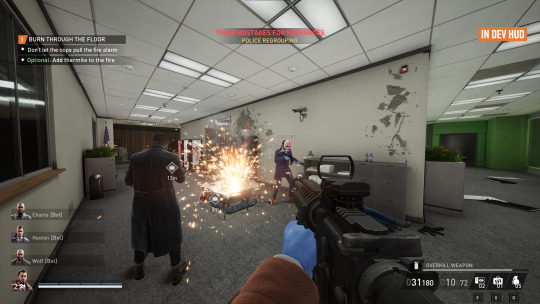
But this brings us to sometime last week. September 21st marked the launch of Starbreeze Studios' (formerly Overkill Software's) Payday 3. The game features a lot of the stuff they had worked on for The Walking Dead (weapon models, a rework to the Shield enemy, armor working exactly like health in OTWD) but also a ton of its own ideas, and in general the gameplay is very solid. The issue, though, is the progression and a number of bugs that hamper the experience, alongside requiring a Starbreeze Nebula account and online connection to play, with no offline mode to speak of, which caused problems when the servers for the game were down for its first three days after launch. Starbreeze promised a patch was coming shortly thereafter, but on October 21st, a month after the game released, someone with ties to Starbreeze, fed up with the Starbreeze Nebula account requirement and persistent Internet connection to play a game with obvious issues and no Patch 1 release date in sight, released the final build of Overkill's The Walking Dead. This featured a proper tutorial, made the original The First Shot into an optional random encounter a player could take on for additional resources, a slew of new weapons, a wandering trader who could sell you blueprints to the DLC's guns, and the rest of Season 2's missions. The leaked build is not playable online but is DRM-free, running just fine completely offline and preserving the game for future generations to point and laugh at, albeit without any help to ease the difficulty for a game that expected four human players at a time.
Perhaps the weirdest part of the leak is that it brought out a handful of fans from the woodwork who view Overkill's The Walking Dead as an underrated gem buried before it could truly shine, individuals who feel the game could be one of the studio's best with enough polish, and as a result Robert Kirkman has been once again inundated with people asking about the now five year-old game, hoping to give it another chance. I, personally, feel that the clumsy pacing, questionable storyline bearing little similarities to the graphic novels it's based on, and the over-reliance on generic bandits voiced by Payday regulars Josh Lenn and Joseph Balderrama prevent the game from being anything but a really weird footnote in a company's confusing, convoluted history.
9 notes
·
View notes
Text
So where have I been for the past month.
Just a bit of a quick update of where I been for about a month now since I have not been creating stuff in Garry's Mod, MMD or Koikatsu even even though I have a few ideas I want to hammer out but I don't really have the time at the moment thanks to work and also last few weekends REALLY getting into VRChat with friends who are on school break and discovering the world of Paid Avatars.
But also, I finally got the last part of my SMG4 PuzzleVision order from a few months back. Mr. Puzzles himself!

Will say if you order him for your own collection you may need to fix his screen a bit since I noticed with others in the SMG4 community who ordered him and got him before me his screen will be a bit off when you open his package he comes in.
It's easy to fix if his screen is a bit popped out of place since it's the same material his keychain uses just a bit more bendable so you can slide it around inside his head to make it look a bit more flush with his head.
Would not be surprised if Luke & Kevin do a refresh of him in the next year as Glitch Pro has been doing with the Murder Drones merch every few months since the start of this year Mr. Puzzles will have a stitched-on face of his default look or this face that quite a few people like of him doing.

Hanging out with some friends a few weeks back in VRC since they are on break from school for the next few months. I'm the Alastor FYI.
Also earlier today I maaaayyy have had a crap time at work because I had to put up with an insufferable Commander who I directly respond to overall for the past few nights now so I went and bought (maybe) one of the last Valve Index's that Valve is going to more then likely make to chear me up a bit because Project Decard AKA Index 2 maybe showing up later this Fall more then likely around before or after Meta showing off their cheaper Quest 3 that everybody knows is a thing for quite sometime now.




So yeah, can't wait for that to show up as my wired VR rig. I already use a Meta Quest 3 but I'm already on my 3rd one 3 months in now because fun fact and I did not know this right away but I had my suspicions after the first one broke a month in and never really started putting 2 and 2 together until the 2nd one broke 2 months later over 2 weeks ago now that working out in VR progressively overtime like doing cardio workouts may cause sweat to REALLY get into the HMD overtime and cause the Quest 3 to brick itself.
Anyways that's what I been up to for the past month now: Somewhat crippling VRChat addiction/VR gaming and work overall. I think maybe this weekend coming for me (this Tuesday coming up after I hit the gym beforehand) I will make something in Garry's Mod and MMD that I been thinking for the past week on doing.
Later!
3 notes
·
View notes
Text
¿Cómo se utiliza la realidad virtual en el marketing del sector inmobiliario?
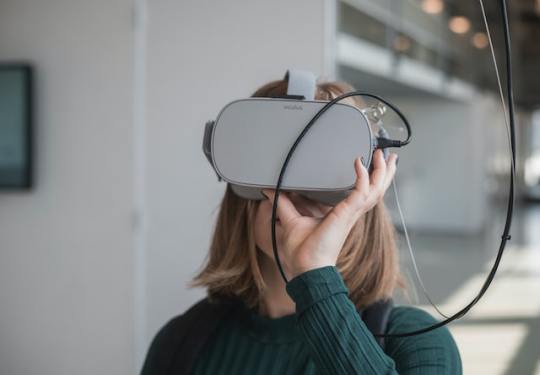
La realidad virtual es una tecnología que te permite experimentar e interactuar con un entorno digital. Hoy queremos explicarte cómo se utiliza la realidad virtual en el marketing en el sector inmobiliario. Sigue leyendo para saber más.
¿Qué es la realidad virtual?
La realidad virtual (VR) es un entorno artificial e inmersivo que puede simular la presencia física en lugares del mundo real o imaginarios. Los sistemas de realidad virtual son pantallas montadas en la cabeza (HMD) que muestran imágenes, sonidos y otras sensaciones para dar a los usuarios la ilusión de que realmente están presentes en un entorno virtual.
El primer uso popular de la realidad virtual fue durante la década de 1990, cuando la gente iba a las salas de juegos y pagaba por la oportunidad de jugar juegos como Doom o Virtua Fighter en sus pantallas. Hoy en día, las personas pueden comprar un auricular para sus teléfonos o computadoras y experimentar la realidad virtual en casa.
¿Cómo se utiliza la realidad virtual en el marketing del sector inmobiliario?
La realidad virtual se está convirtiendo en una forma popular de exhibir bienes raíces. Esta tecnología muestra a las personas cómo se vería la propiedad sin tener que moverse de su casa.
Los vídeos de realidad virtual en bienes raíces se pueden usar para diferentes propósitos. Por ejemplo, comercializar la propiedad o para darle a un comprador potencial una idea de cómo se ve el lugar antes de que haga una oferta por él.
Por lo que la realidad virtual ya no es solo para los juegos de vídeo, sino también es muy útil para las empresas.
La realidad virtual es una tecnología que ha existido durante años, pero recién ahora está comenzando a abrirse camino en la industria de bienes raíces. Los recorridos de realidad virtual son una excelente manera de exhibir propiedades y también funcionan como herramienta de marketing.
El primer uso de la realidad virtual en la industria de bienes raíces fue en 1989, cuando una empresa llamada Home Vision Systems creó el primer recorrido por el hogar con RV. Usaron modelado 3D y animación 3D para crear sus visitas virtuales a las casas.
Desde entonces, ha habido muchos avances en el campo de la realidad virtual y ahora se está utilizando en todo el mundo como una forma de comercializar casas o terrenos para la venta o el alquiler.
Algunos de estos avances incluyen mejores gráficos y escenas más realistas, que se pueden tomar en cualquier momento.
Mejores prácticas al usar VR en presentaciones de bienes raíces
La realidad virtual se puede usar para mostrar la propiedad tal como está o con cambios futuros como muebles, paisajismo, etc.
Las mejores prácticas para usar VR en presentaciones de bienes raíces son:
Mostrar la propiedad tal como es.
Mostrar la propiedad con cambios, sirve para ver cómo quedarán los proyectos de viviendas.
Conocer a tu audiencia y sus necesidades.
Dándoles una sensación de presencia en la propiedad.
Educarlos sobre las características de la propiedad.
Ya sabes cómo se utiliza la realidad virtual en el marketing y la publicidad en el sector inmobiliario, son muchas formas de aprovechar esta tecnología en la compraventa de propiedades.
3 notes
·
View notes
Text
Augmented Reality (AR) and Virtual Reality (VR)
Augmented Reality (AR) and Virtual Reality (VR) are exciting and rapidly evolving fields within computer science. Here's a breakdown of key aspects, technologies, and areas of study within AR and VR:
1. Definitions and Concepts
Augmented Reality (AR): Enhances the real world by overlaying digital information (such as images, videos, or 3D models) onto the physical environment. Examples include apps like Pokémon GO and AR features in Google Maps.
Virtual Reality (VR): Creates a fully immersive digital environment that replaces the physical world. Users can interact with this environment using VR headsets like the Oculus Rift, HTC Vive, or PlayStation VR.
2. Hardware and Devices
AR Devices:
Smartphones and Tablets: Use cameras and sensors to overlay digital content on the real world (e.g., Apple ARKit, Google ARCore).
Smart Glasses: Wearable devices like Microsoft HoloLens and Google Glass.
VR Devices:
Head-Mounted Displays (HMDs): Devices like Oculus Rift, HTC Vive, and PlayStation VR.
Input Devices: Controllers, gloves, and treadmills to interact with the virtual environment.
Haptic Feedback Devices: Provide tactile feedback to enhance immersion (e.g., haptic gloves, vests).
3. Software and Development Tools
AR Development Tools:
ARKit (Apple): A framework for creating AR experiences on iOS devices.
ARCore (Google): A platform for building AR applications on Android.
Vuforia: An AR platform for mobile devices that can recognize images and objects.
VR Development Tools:
Unity: A popular game development engine with strong support for VR.
Unreal Engine: Another powerful engine for creating high-quality VR experiences.
SteamVR: A platform by Valve for developing VR content.
4. Key Technologies
Tracking and Mapping:
SLAM (Simultaneous Localization and Mapping): A method for mapping an environment while keeping track of the device's location within it.
Computer Vision: Techniques for recognizing and processing images and objects.
3D Modeling and Animation:
3D Graphics Software: Tools like Blender, Maya, and 3ds Max for creating 3D models and animations.
Interaction Design:
Gesture Recognition: Detecting and interpreting human gestures for interaction.
Voice Commands: Using speech recognition for control and interaction.
5. Applications and Use Cases
Gaming and Entertainment: Immersive games, virtual concerts, and interactive storytelling.
Education and Training: Simulations for medical training, flight simulators, and virtual classrooms.
Retail and Marketing: Virtual try-ons, interactive advertisements, and AR product visualizations.
Healthcare: AR-assisted surgeries, VR therapy for mental health, and rehabilitation exercises.
Architecture and Real Estate: Virtual tours, AR-enhanced blueprints, and interior design visualizations.
Tourism and Cultural Heritage: Virtual museum tours, AR-enhanced historical sites, and interactive guides.
6. Challenges and Considerations
Technical Challenges:
Latency: Reducing delay between user actions and system responses to maintain immersion.
Field of View: Expanding the visible area in AR/VR devices.
Battery Life: Improving power efficiency of portable AR/VR devices.
Design Challenges:
User Experience (UX): Designing intuitive and comfortable interactions.
Accessibility: Ensuring AR/VR experiences are accessible to people with disabilities.
Ethical and Social Considerations:
Privacy: Protecting user data and ensuring secure interactions.
Health and Safety: Addressing issues like motion sickness and ensuring safe usage.
7. Learning Resources
Online Courses and Tutorials:
Coursera, Udemy, edX: Offer courses on AR/VR development.
YouTube Channels: Follow channels like "Valem" for Unity AR/VR tutorials.
Books:
"Augmented Reality: Principles and Practice" by Dieter Schmalstieg and Tobias Hollerer.
"Learning Virtual Reality" by Tony Parisi.
Communities and Forums:
Reddit: Subreddits like r/VRdev and r/augmentedreality.
Stack Overflow: For technical questions and troubleshooting.
Conclusion
Augmented Reality and Virtual Reality are transformative technologies with a wide range of applications. By gaining expertise in these areas, you can contribute to innovative developments in gaming, education, healthcare, and beyond. Dive into the tools, stay updated with the latest trends, and engage with the community to build a solid foundation in AR and VR.
0 notes
Text
The 21st century has seen significant advancements in VR technology. The introduction of more powerful computing, better graphics processing units (GPUs), and innovative HMDs has brought VR closer to the mainstream. Oculus Rift, developed by Oculus VR (later acquired by Facebook), marked a turning point in 2012 with its successful Kickstarter campaign. This device sparked a renewed interest in VR, leading to the development of other notable HMDs such as HTC Vive, PlayStation VR, and Valve Index.
0 notes
Text
The 21st century has seen significant advancements in VR technology. The introduction of more powerful computing, better graphics processing units (GPUs), and innovative HMDs has brought VR closer to the mainstream. Oculus Rift, developed by Oculus VR (later acquired by Facebook), marked a turning point in 2012 with its successful Kickstarter campaign. This device sparked a renewed interest in VR, leading to the development of other notable HMDs such as HTC Vive, PlayStation VR, and Valve Index.
0 notes
Text
youtube
#youtube#technology#vr#apple vr headset#apple vr#hmd#headset#ar#mixed reality#apple#apple event#secret#MacBook#apple mixed reality headset#sistersatan#sister satan#Matt talks tech#Matt#tech
0 notes
Text
The 21st century has seen significant advancements in VR technology. The introduction of more powerful computing, better graphics processing units (GPUs), and innovative HMDs has brought VR closer to the mainstream. Oculus Rift, developed by Oculus VR (later acquired by Facebook), marked a turning point in 2012 with its successful Kickstarter campaign. This device sparked a renewed interest in VR, leading to the development of other notable HMDs such as HTC Vive, PlayStation VR, and Valve Index.
0 notes
Text
The 21st century has seen significant advancements in VR technology. The introduction of more powerful computing, better graphics processing units (GPUs), and innovative HMDs has brought VR closer to the mainstream. Oculus Rift, developed by Oculus VR (later acquired by Facebook), marked a turning point in 2012 with its successful Kickstarter campaign. This device sparked a renewed interest in VR, leading to the development of other notable HMDs such as HTC Vive, PlayStation VR, and Valve Index.
0 notes